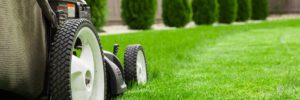Lawn Services to Keep Your Lawn Looking Great
Having a lawn is a great feature to have in your home. However, there are several things you should know when it comes to having a great-looking lawn. Lawn Services CT can help you keep your lawn looking great. The services include fertilizing, aerating, seeding, and weed control.
Adding compost to your lawn is a natural fertilizing method. It also helps the soil to absorb more water. It’s a great way to improve the overall quality of your lawn and reduce fertilizer and pesticide inputs.
Compost contains a variety of nutrients, such as carbon, nitrogen, and phosphorus. It’s also an excellent soil conditioner and improves the moisture-holding capacity of sandy soils.
Compost is made from waste materials such as grass clippings, leaves, and compostable animal manure. You can buy compost in small quantities at your local garden center or home improvement store. It’s also considered a “green” product because it recycles organic material.
Compost is not only a great way to add nutrients to your lawn, but it’s also a great way to declutter your yard and save money. You can use compost to fertilize your lawn, improve the soil, and even recycle your food scraps from the kitchen.
Compost is a rich dark substance that is made from decaying organic material. It’s also a good source of vitamins and minerals. It contains enzymes, minerals, and micronutrients that are essential to plants. It can be used to improve soil structure and the aeration of heavy clay soils.
Compost also contains heat, which is produced by fungi feasting on organic matter. It also has a sweet smell. It’s the cheapest and most environmentally friendly way to preserve your yard.
It’s also a great way to boost curb appeal. A properly managed soil system can help you maximize your profits.
Compost is the easiest way to preserve the environment. It’s also the easiest product to use. A well-managed compost pile will be ready in one to four months.
Whether you’re using a commercial lawn care service or you’re applying herbicides yourself, it’s important to plan your application. Follow the directions on the label for herbicide application and timing. It’s also a good idea to consult with your local Cooperative Extension agent for information on the weeds in your yard and possible concerns when using herbicides.
A good strategy for effective weed control involves following all directions on the label and observing all warnings. In addition, it’s important to make sure you apply herbicides at the appropriate times of the year.
The optimum time for applying herbicides depends on the weed species in your yard. For example, it’s best to apply pre-emergent herbicides to prevent weed seeds from germinating. It’s also best to apply post-emergent herbicides to kill the germinated weeds.
Herbicides are usually applied to the soil or foliage of a plant. They’re usually mixed with water, which makes them easy to apply. There are also herbicides that are formulated as emulsions or granules.
Some of the more common herbicides include glyphosate, glufosinate, and dicamba. They’re effective against annual and perennial weeds. Glyphosate is the most widely used postemergence herbicide in landscape plantings.
In addition, some herbicides have climatic restrictions, which means they’re not effective in certain climates. It’s also important to consider how the herbicide will affect the plants in your yard, such as whether it will increase runoff.
It’s also important to understand how herbicides are transported. Some of the ways they’re transported include atmospheric deposition, groundwater discharges, and spray drift. The extent of these effects depends on the application rate, time of year, and precipitation.
There, you’ll find information on the different types of herbicides, how to use them, and how to use a lawn weed control chart.
Performing aeration and seeding lawn services is an important step in maintaining your lawn’s health. It will help fill in thin areas and encourage new growth. The process can also help prevent brown spots. The best time to perform these services is during the fall. This is when the warm season grass grows, and it will help keep your lawn lush and green through the winter.
When aerating your lawn, it is important to know that aeration is not a substitute for good lawn care. Aeration will provide your turf with a healthy root system, which will help it fight off weeds and disease.
The aeration process breaks up compacted soil, which will make it easier for water and air to reach your lawn’s roots. In addition, it will help with thatch buildup. This is a layer of organic debris that may be preventing your grass from receiving the proper nutrients.






